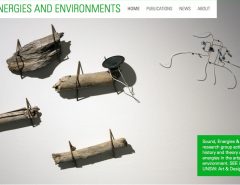The Imaginary Musician – a suggestion to organizers about financing, grants and employment
John Cage used radio’s. He used them in his compositions. As a title he chose ‘imaginary landscapes’. It’s not important why he used this title. In the seventh and eighth century, and maybe also in later years, Sufi’s described their visions: a world full of bliss; everything was drenched by the presence of The One. In fact, some scholars thought it was a portrait of The One, result of religious ecstasy. The visions were called ‘imaginary worlds’.
The imaginary landscape and the imaginary world define as such, also, a distance. It is the same distance as – for example – a present day listener has to music, be it at home, in a concert hall, in his car or in a bar. Music is a vehicle for his emotions; it can even conserve that emotion and transport it through time.Of course, music is so much more, otherwise it wouldn’t be a subject to study. But whatever music is, it is nameable as music: classical, experimental, jazz, pop, folk. If you want you can start whistling before having heard the tune.
In the margins of the musical world the works of soundicians are hard to define. A wide range of terms are used, none of them is generally accepted as the one. The result is some kind of music that is almost impossible to define, to institutionalise, or – in a less official way – to organise.This doesn’t mean that those involved in producing sounds that cannot bear a definition, don’t want to receive financing. Talking for myself I would gladly receive a yearly grant, but I find it difficult to catch my sound works in a kind of prose that explains it all.
That’s why I would like to introduce ‘The Imaginary Musician’, because he doesn’t exist. He is a product of the imagination of the listener. Okay, there will be someone to orchestrate – navigate – create – organize sounds into a whole that will redefine space in whatever way. But the outcome of this redefinition will be an experience to which the listener is the initiator. In accepting the part of the imaginary musician, the soundician becomes the first one to disappear. It will be superfluous to name his sounds, because it doesn’t matter anymore. The listener has become the nominator.
I know it is a trick, in the same way as the opera house, the stage or an expensive audio equipment are tricks. These widely accepted cultural institutions have a direct and profound impact on the behaviour of the audience.
Now there is a way to institutionalise the imaginary musician. And here is the part about financing, which is a very down to earth part. It is up to organizers and their organisations to employ the imaginary musician. Just put him on the pay list. What is the task of the imaginary musician? He has to be at a certain place at a certain time and produce sounds.
Those who give grants are very fond of projects. A project is an ongoing process, that maybe sometime will result in something definitive. No one has an idea, what the outcome will be. It is so much easier to hide once activity in a project. Employing an imaginary musician is an ideal project, because it is about nothing and something at the same time. It’s about an anonymous soundician appearing and disappearing into sound. And it’s about money. The imaginary musician could earn 12.000 euro a year. It is not that much. It is 1000 euro a month. From that money tickets, accommodation and fee can be paid. 1000 euro a month is a minimum wage. But for that money you can get at least four quality concerts a month.
the no-budget foundations blog





Leave a Reply
Lo siento, debes estar conectado para publicar un comentario.